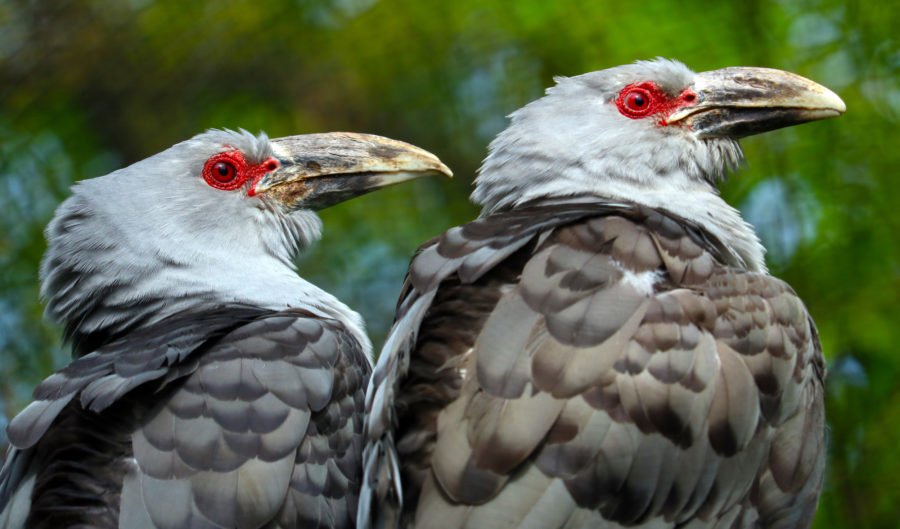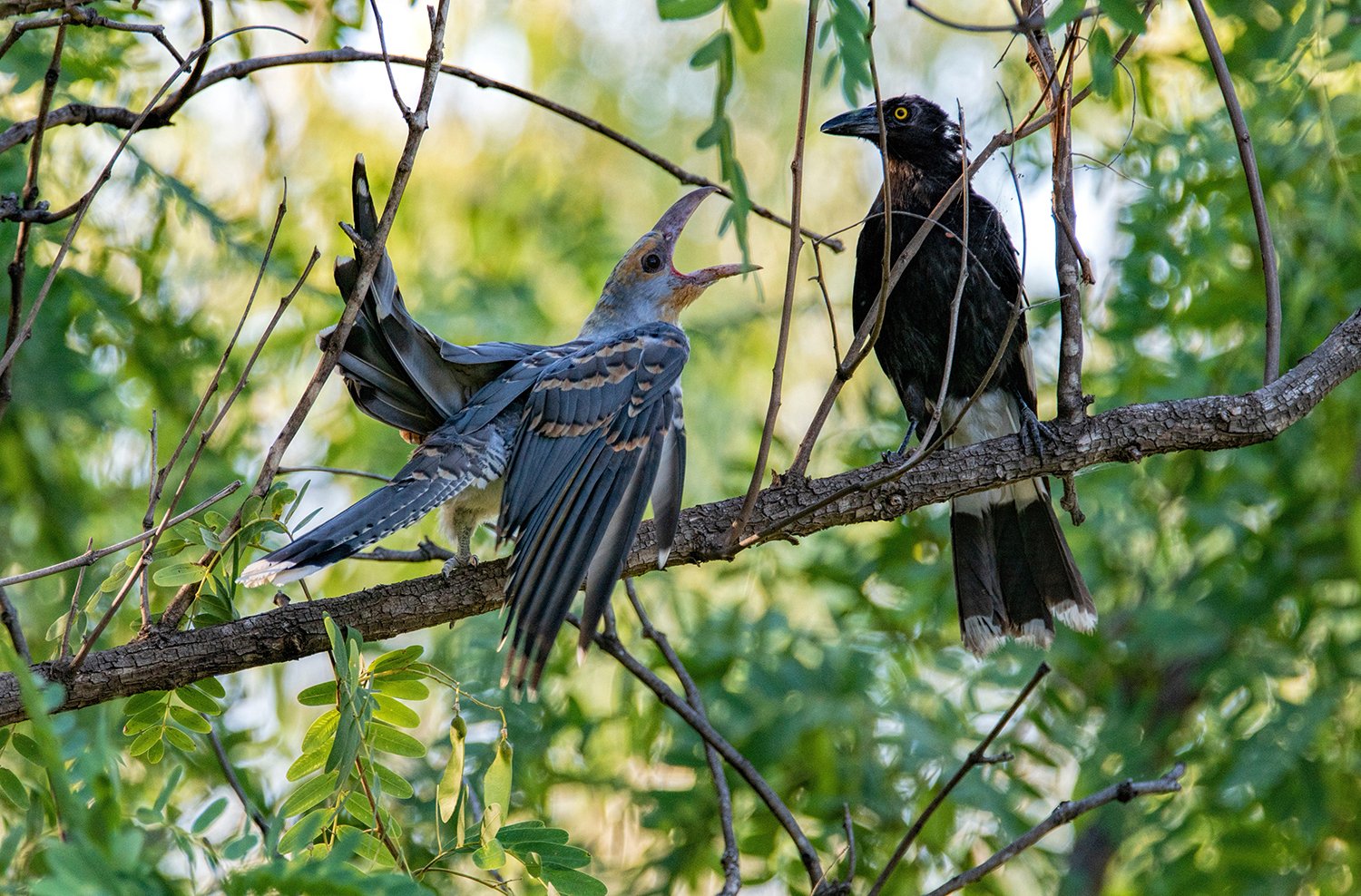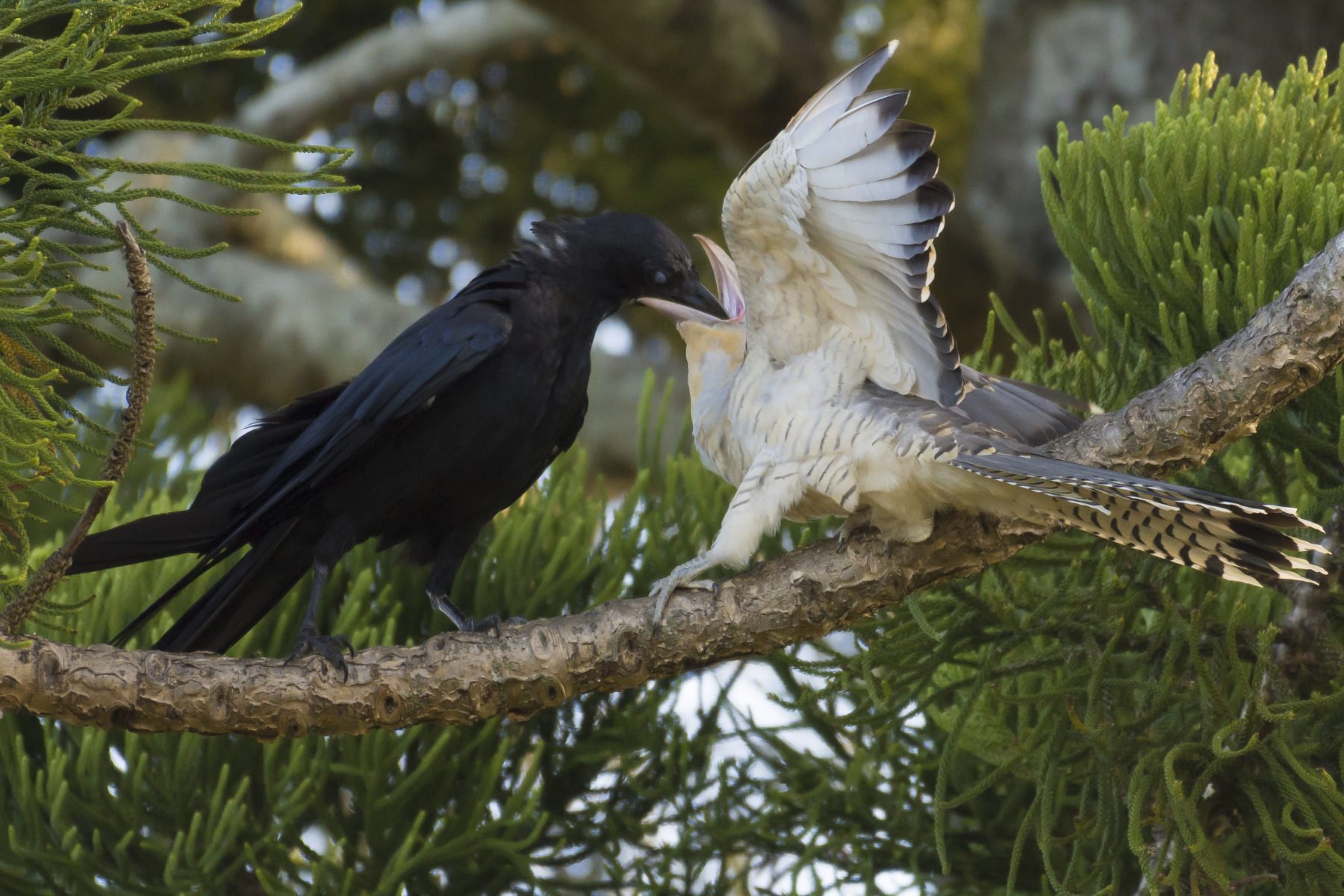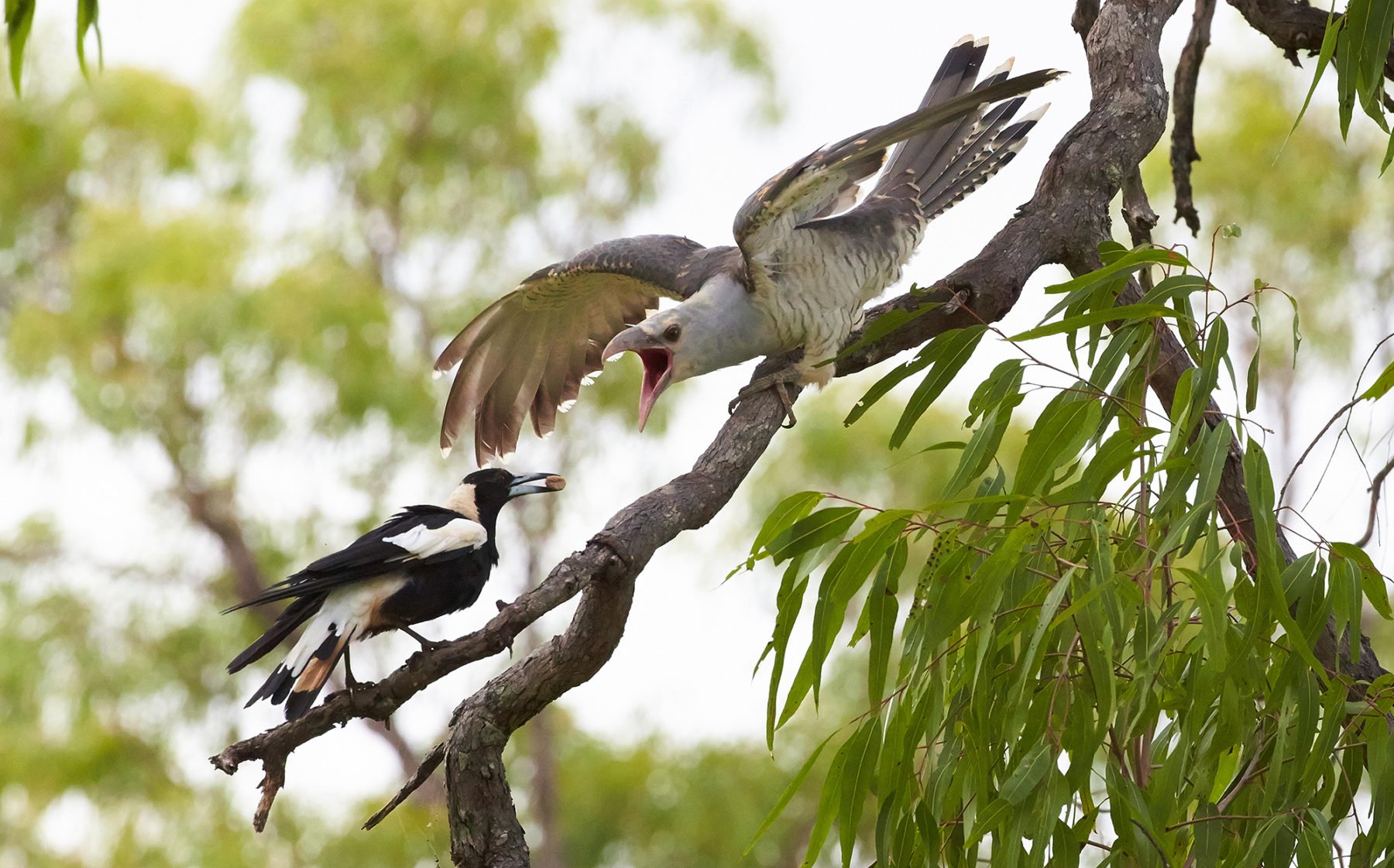The channel-billed cuckoo is a magpie’s worst nightmare

Bec Crew
Bec Crew

The world’s largest cuckoo bird, the channel-billed cuckoo (Scythrops novaehollandiae) shows up in northern and eastern Australia in the months leading into summer ever year to breed, before flying back to New Guinea and Indonesia around February and March. It can also occasionally be found in New Caledonia and New Zealand.
Nicknamed the storm bird, the channel-billed cuckoo seems to welcome the first storms of the wet season with their loud raucous call – a gargling, unmistakable shout that can go all through the night as the birds are courting mates.
If you’re hoping to spot a channel-billed cuckoo, their breeding range runs from north-eastern Western Australia through the Northern Territory and Queensland down into eastern New South Wales as far as Sydney. There have also been reports that they’re now breeding along the south coast of NSW.
You can hear the call in this video, which also showcases their big dinosaur energy:
When a female channel-billed cuckoo is ready to lay her eggs, she’ll scope out the nest of a magpie, crow, or currawong and lay hers among the others. Because the cuckoo chicks grow much faster than the other chicks, they will take all the food and starve the rest.
The rapid growth of channel-billed cuckoos means they quickly overtake their adoptive parents, too. A fully grown channel-billed cuckoo measures between 56 and 70 cm, with a wingspan that can stretch to more than a metre. Australian magpies, by comparison, grow to around 37 to 43 cm, with a wingspan of 65 to 85 cm.
This size difference is stark, even when the channel-billed cuckoo is young.
Here’s a currawong, wondering what it’s gotten itself into:

Here’s a crow thinking the same thing, no doubt:

And here’s a magpie mum, who honestly just needs a break:

Channel-billed cuckoos feed mainly on native figs and native fruits, but they will eat the occasional insect or baby bird. They use their large size to intimidate other birds, and will occasionally rob a nest and eat the eggs right in front of the distressed parents.
It’s pretty hard to watch:
Channel-billed cuckoos are striking to look at, and they certainly caught the attention of Captain Arthur Phillip. He wrote about them in his 1789 book, The voyage of Governor Phillip to Botany Bay, comparing their features to those of the parrot, hornbill, and toucan.
He gave the bird the genus name Scythrops, which comes from the Ancient Greek word skuthro-/σκυθρο, meaning angry, or sullen, eye or face. The species name Novaehollandiae refers to New Holland, which would later come to mean Australia.
Here are some juvenile channel-billed cuckoos, looking very sweet without the signature red eyes:

